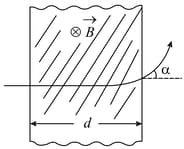Several $\alpha$-particles of different speeds enter in a uniform magnetic field confined into a cylindrical region. If all the -particles enter the field radially, what can you say about time intervals spent by them in the magnetic field?
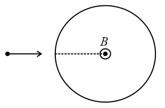

Important Questions on Magnetic Effects of Current and Magnetism
(electron’s charge , mass of electron )
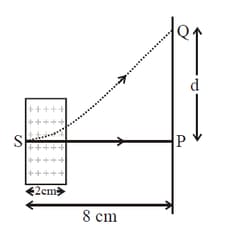
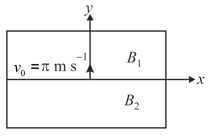
Two parallel metal plates and separated by a distance are connected to an ammeter. Photons of energy are incident on the photosensitive plate of threshold wavelength . The minimum value of the magnetic field to be applied parallel to the plates so that the current through the ammeter becomes zero is . Then the value of
is (mass of electron , charge of electron )
A uniform magnetic field acts at a right angle to the direction of motion of a charged particle. As a result, the charged particle moves in a circular path of radius . If both the charge and speed of the charged particles are made double, then the radius of the circular path will be
To which of the following quantities, the radius of the circular path of a charged particle moving at right angles to a uniform magnetic field is directly proportional?
Two ions of masses and have charges and respectively. These ions pass through the region of the constant perpendicular magnetic field. The kinetic energy of both ions is the same. Then:
A rectangular region of dimensions has a constant magnetic field into the plane of the paper as shown. On one side the region is bounded by a screen. On the other side positive ions of mass and charge are accelerated from rest and towards the screen by a parallel plate capacitor at constant potential difference , and come out through a small hole in the upper plate. Which one of the following statements is correct regarding the charge on the ions that hit the screen?
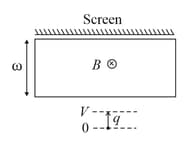
A proton (mass ) accelerated by a potential difference flies through a uniform transverse magnetic field . The field occupies a region of space by width . If be the angle of deviation of proton from the initial direction of motion (see figure), the value of will be:
